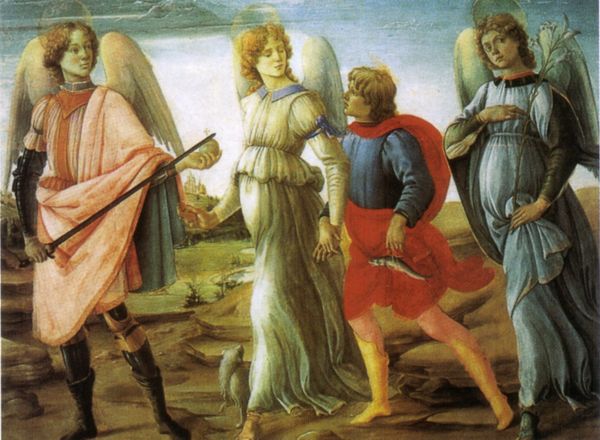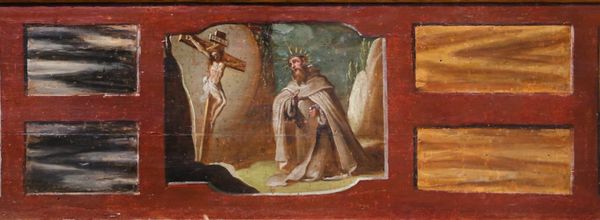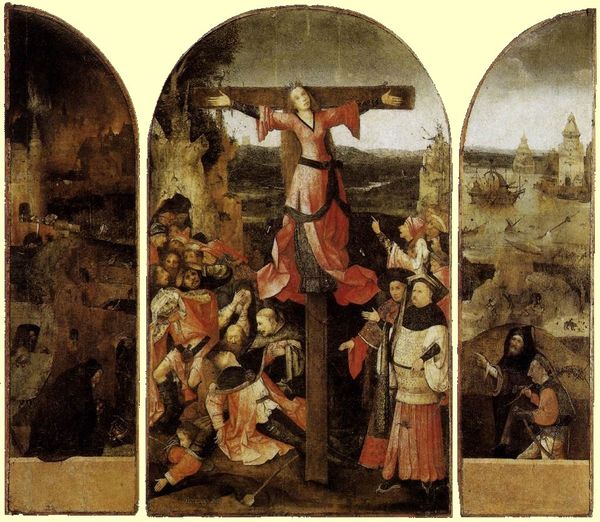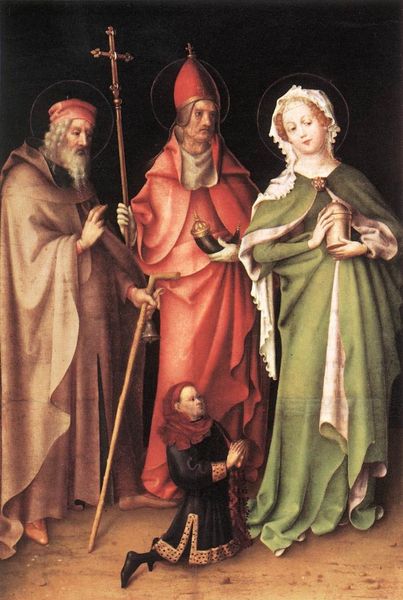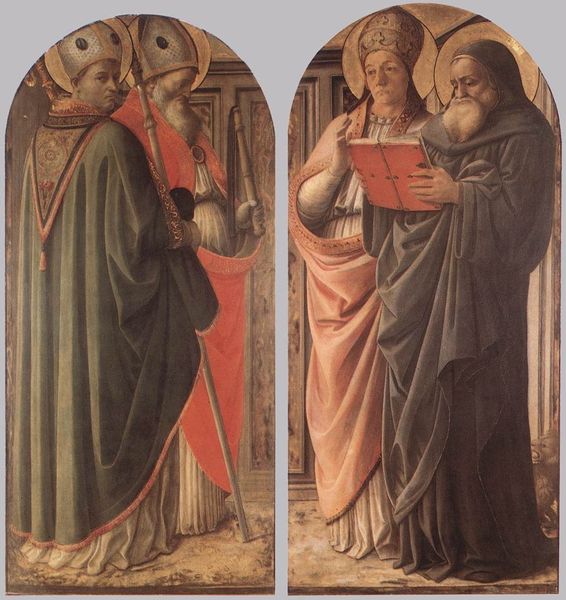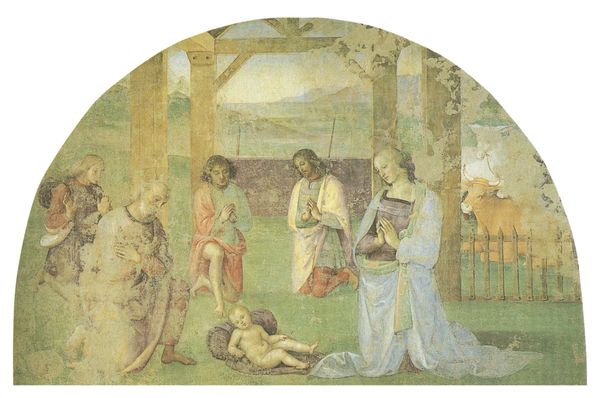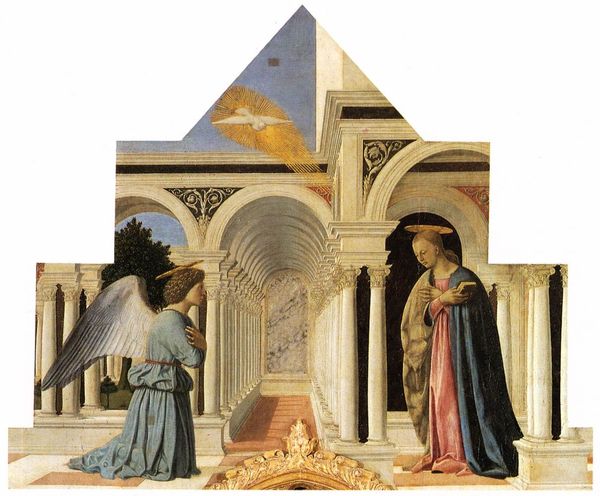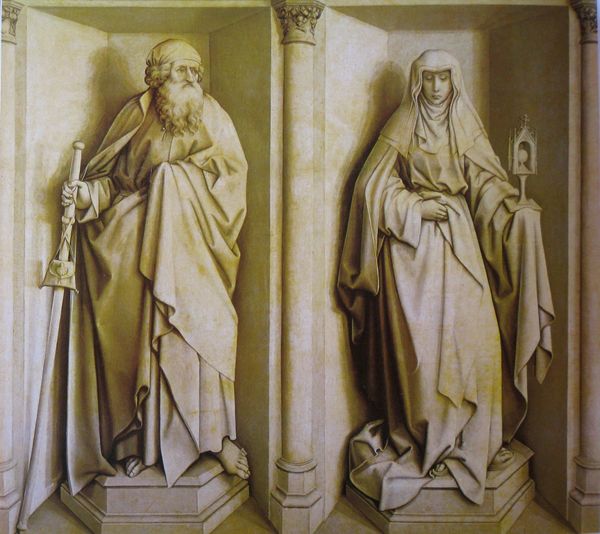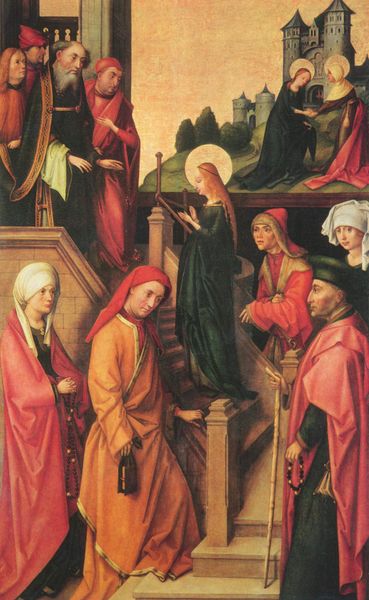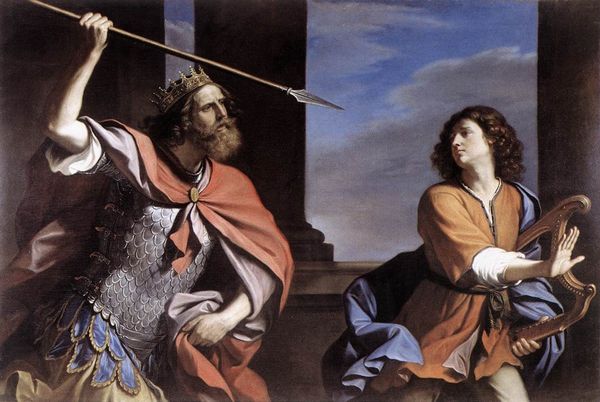
panel, oil-paint
#
allegories
#
panel
#
allegory
#
oil-paint
#
landscape
#
holy-places
#
figuration
#
oil painting
#
christianity
#
history-painting
#
italian-renaissance
#
christ
Copyright: Public domain
Hieronymus Bosch painted these panels, a detail from The Last Judgement, in the Netherlands around 1500. As a representation of the final reckoning of souls, The Last Judgement reflects the religious beliefs of the time but also, perhaps, anxieties about social order. Bosch was working in a period of relative stability in the Netherlands but the excesses of the church were often a cause for concern. The image creates meaning through contrasting visual codes. On the left, a man with a staff journeys through a barren landscape; on the right, a well-dressed figure stands in what appears to be a doorway, a servant beside him. Are these images meant to represent different social classes, and, if so, what does that say about the politics of imagery? As historians, we can research the economic structures of the time and look for literary sources to better understand the artist's critique. By understanding the social and institutional context, we are better able to understand the artist's message.
Comments
No comments
Be the first to comment and join the conversation on the ultimate creative platform.
